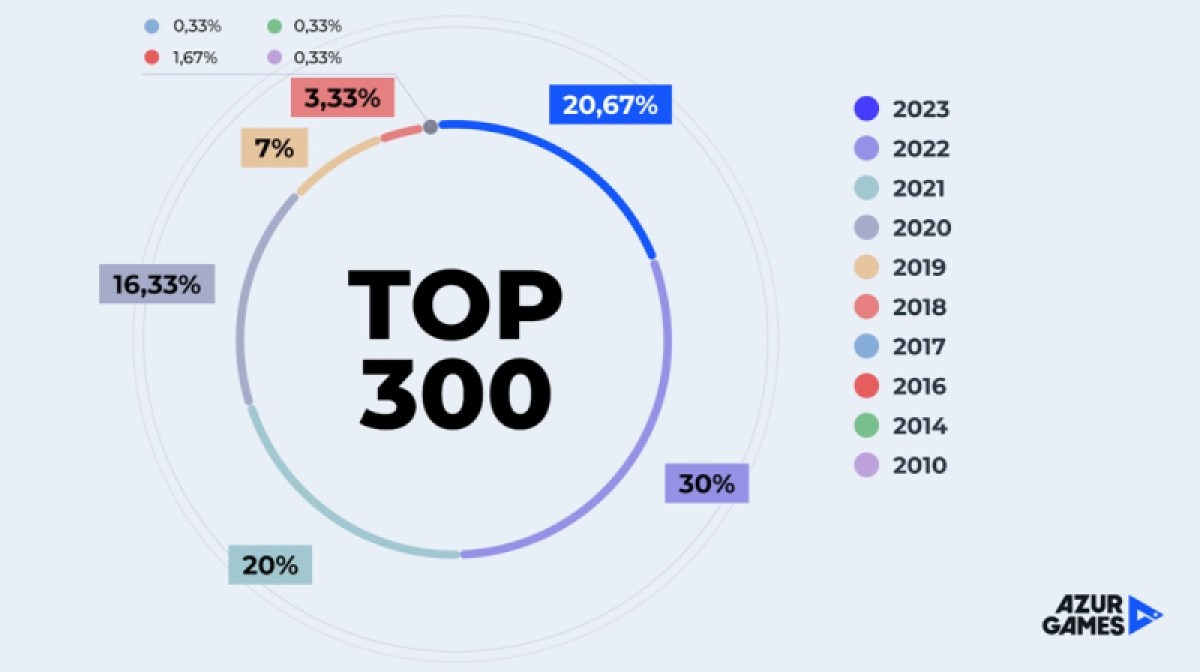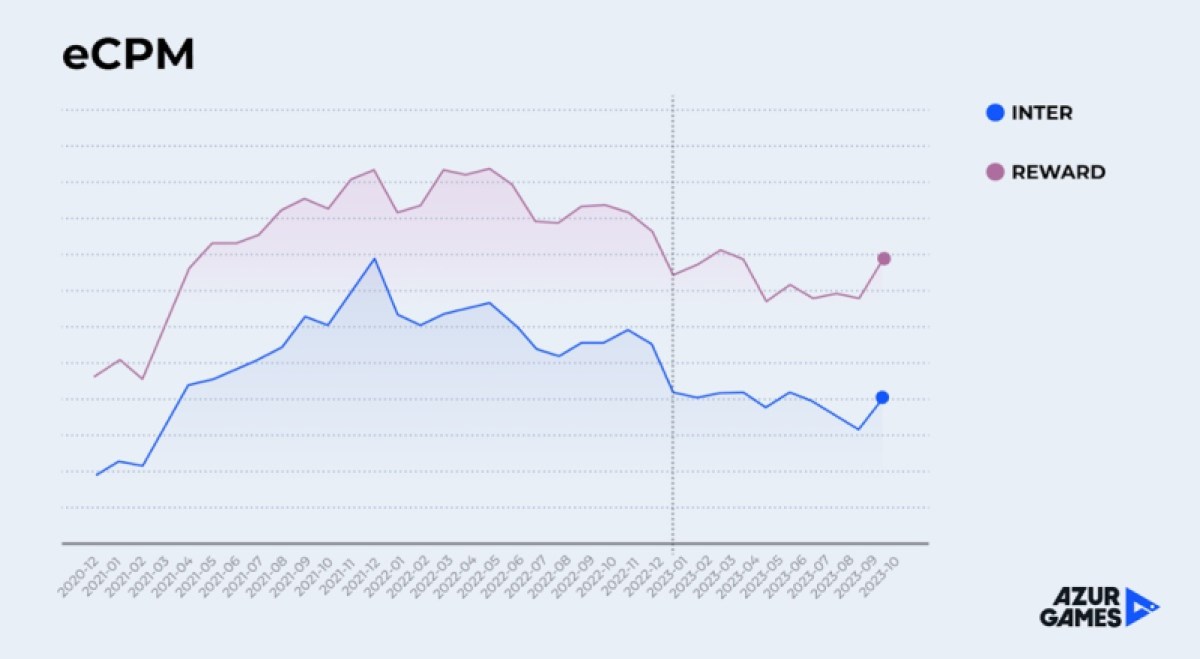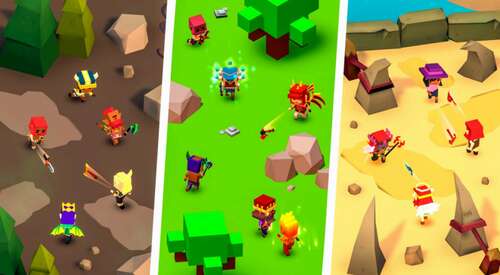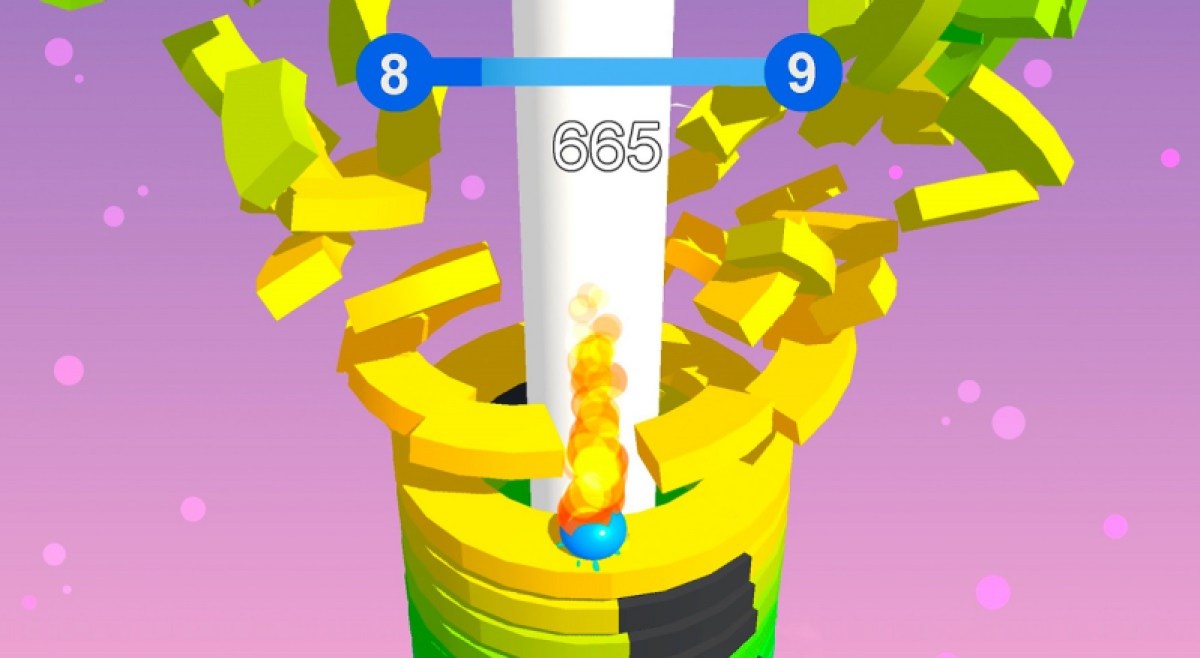When I hear how many games hypercasual games — the mobile games you can play in a minute or less — are downloaded in the world, I’m always astounded.
Companies appreciate Voodoo, Say Games, Rollic and others have been saying they’re reaching billions of players for several years. Azur Games said that it has now reached eight billion installs for its games. How is that possible, given that there are 7.89 billion people on the planet?
Well, Statista reports there are actually 16.8 billion mobile phones in the world, and perhaps 6.9 billion in active use. I suppose a lot of us have more than one mobile phone. And Azur Games has more than 100 games available, many of them hypercasual titles, and those are very popular. It has midcore titles too.
From the start Azur Games was focused on midcore market and then saw opportunity in hypercasual games. But thanks to Apple’s focus on privacy over targeted ads and even Unity’s recent focus on charging per download, there are forces that are pushing Azur Games back to its roots — the company is moving into casual and midcore games once again, the latter being games that are hardcore in nature but played in short time cycles on mobile devices.
Event
GamesBeat at the Game Awards
We invite you to unite us in LA for GamesBeat at the Game Awards event this December 7. Reserve your spot now as space is limited!
I did a written interview with Dmitry Yaminsky, cofounder of Azur Games, to explore this topic more. Google itself has had more than 13 billion installs in the last five years. That’s because many people will re-install games and apps when they upgrade their phones. And as an FYI, Azur Games has around 350 million to 400 million installs for its midcore games.
Then it becomes understandable — but still mind boggling — that such high numbers are possible. I exchanged written questions with Yaminsky. Here’s an edited transcript of our conversation.

GamesBeat: Looking back, Azur Games had 1.5 billion installs two years ago, and now you’ve surpassed eight billion. What drove this growth?
Dmitry Yaminsky: It’s astonishing how time has zipped by. Reflecting on our journey, I’d say a blend of foresight and adaptability has been key. First off, we tapped into the hyper-casual segment at just the right moment, dedicating substantial efforts to building and refining our internal expertise. We were also unafraid to experiment and constantly seek fresh opportunities for growth, despite encountering a few bumps along the way.
Coinciding with this period was the global pandemic, which essentially pressed the world’s pause button and led to an unprecedented surge in the gaming industry. Aware that this boom was a temporary phase, we focused on diversifying our portfolio and laying solid foundations for future expansion.
Another important aspect of our growth strategy was M&A. We looked for talented teams and promising projects that could benefit from our resources for a new development phase. In evaluating these opportunities, we prioritized projects based on actual performance metrics, their growth potential, and the prospect of fostering the team’s professional growth. These acquisitions played a significant role in amplifying our portfolio, marking a new era of expansion for Azur Games.
GamesBeat: Following the pandemic, there’s been much talk about the challenges and heightened competition in the gaming market. Would you say the market is still experiencing growth?
Yaminsky: It’s an interesting point to converse. Our recent analysis within Azur Games sheds some light on this. The overall market for mobile games is witnessing a modest uptick in installs. Specifically, the hypercasual genre seems to have reached a plateau, maintaining steady figures slightly below its peak but not declining. Genres appreciate casual and midcore are faring even better. However, the real challenges are a bit more nuanced.
One notable trend is that the enhance in game installs hasn’t kept pace with the sheer volume of new releases. This means a similar number of installs is now spread across a greater number of titles, causing individual projects to exhibit less impressive performance metrics. While hit games continue to excel, launching a hit has become increasingly challenging. Also, the “old but gold” games that preserve popularity and continue to attract new players are consistently in the top ranks.
For instance, half of the current top 300 games were launched in 2021 and 2022.

Another crucial factor is the decrease in advertising effectiveness. In the hypercasual segment, a key health indicator is eCPM (Effective Cost Per Mille), which has notably declined post-pandemic. I could share a graph from our internal data to demonstrate this trend, though I won’t include specific figures. The graph clearly shows a downturn in performance.
So, despite the rise in downloads, the market isn’t as financially robust as it was.
This landscape requires novel development approaches and more innovative ways to capture audience attention. Companies that haven’t evolved from strategies that worked two years ago are gradually being edged out of the market.
GamesBeat: So, the old approach doesn’t work anymore. What changed?

Yaminsky: Oh, a lot of things. Let me outline a few key changes.
Firstly, the concept of high margins, commonplace a few years back, is no longer the norm. Back then, it was typical for a small team, maybe one or two individuals, to whip up a basic prototype over a weekend or a week, assess it with a real audience, and occasionally strike gold with a hit.
Nowadays, the idea of a ‘prototype’ is almost obsolete. We’re crafting fully-fledged projects from the get-go. It’s become rare to find new mechanics that captivate players without high-quality visuals, so there’s a need to boost player engagement with familiar gameplay.
The focus now extends beyond mere game design to include VFX and the overall artistic direction. The magic often lies in the subtle details — how particle effects are crafted, the art style, the texture choices without overcomplicating things — these elements collectively contribute to the game’s immersive encounter.
The look & feel of a project are no longer just about the core loop. It’s crucial to consider all game aspects, with visual components demanding a substantial share of the team’s resources.
Consequently, developing what we used to call a ‘hyper-casual prototype’ might now take a month, two, or even three, and demand the efforts of a team of ten. That’s a stark contrast to the smaller teams and shorter development times we saw back in 2021.
GamesBeat: With the shifting dynamics in gaming, is the hyper-casual genre nearing its end? Should developers pivot towards casual or midcore projects?
Yaminsky: Transitioning to casual or midcore genres can be a growth avenue, but it requires a different skill set. For those who’ve primarily worked on hyper-casual games, adapting to the complexities of midcore can be challenging.
As to Azur Games, we’re definitely focusing more on casual and midcore projects right now, but our very foundation was in midcore development.
The venture into hyper-casual was initially an experimental proceed, driven by our ability to spot and act on emerging trends. Now, we’re exploring new and promising niches, with a keen focus on casual and midcore games.
However, it’s not the end for hyper-casual games. This year, we’ve made significant investments, acquiring a considerable portfolio of hyper-casual projects from renowned studios with billions of installs. We’re now developing these games in-house, leveraging our expertise to improve their potential.
GamesBeat: With billions of downloads already, what improvements can be made to these acquired projects?
Our encounter with thousands of prototypes gives us unique insights into unlocking potential. It’s important to note that you still can acquire new players for longstanding projects. These projects are continually updated and refined, maintaining their position among the top downloads. The data in our analytical reports echoes this.
Contrary to initial beliefs that hyper-casual games have short lifespans, their sustained performance and plateau in installations suggest otherwise. It’s not just about product quality or marketing; long-term operation is key.
We’ve successfully extended the lifespan of several hyper-casual games through systematic updates and improvements. Some of our older titles are experiencing a resurgence, proving their lasting appeal. In the current market, our focus is to work with finished products, ensuring they savor prolonged success and relevance.
GamesBeat: Let me rephrase the question, then: beyond marketing, what’s critical for a game’s financial success and audience appeal in today’s market?

If we’re talking about developing games from scratch, relying on rudimentary prototypes or hoping to stumble upon a ‘silver bullet’ is no longer viable for sustained business success, regardless of the few exceptions. Modern games need to exude a sense of completeness right from the start, including elements appreciate end-game features which were traditionally added months after release.
A major shift for hyper-casual is in the use of unique assets. Gone are the days when recycling assets from open sources was standard practice, they’ve been used by too many companies in too many games. Players notice that, often subconsciously, and seek fresh and novel experiences.
Content volume is another key factor. By ‘content’ I mean everything from the number of levels to mechanics and animations.The variety and fluidity of animations and VFX is crucial in crafting an engaging gameplay encounter.
Today, specialized teams are necessary to preserve quality, as multi-role developers can no longer face the increasing standards of game development.
Performance optimization is also crucial, especially for players in developing countries using less powerful devices. Factors such as FPS drops significantly impact a game’s success — aspects that were mostly overlooked by developers are now key considerations.
GamesBeat: So, is there still room for indie developers and smaller studios in this environment?

Absolutely, there’s always a place for indie developers and smaller studios. However, the landscape has become more challenging. A few years back, there was a notion that the rise of independent studios was imminent, given the accessibility of development and marketing tools. It was even thought that the need for publishers might diminish.
However, the reality has been different. The accumulated internal expertise and resources necessary to create and uphold complex projects have become more critical than ever.
That said, many independent studios are driven by passionate individuals who often bring unique and innovative ideas to the table. It’s a tough journey, but one that commands immense respect.
So yes, the market is maturing, and this evolution is influencing smaller players.
GamesBeat: With large developers and publishers in the scene, are there differences in approaches? How does Azur Games stand out?
Each player in the market has their unique strengths and areas for growth. Our approach, from the outset, wasn’t to chase after ready-made hits with soaring metrics. That space was already dominated by larger publishers. Instead, we looked for potential in projects and, crucially, teams we could work together with for the long haul, even if their projects didn’t initially dazzle with metrics.
Our method of iterative development, transforming low-performing projects into hits, helped us amass a wealth of expertise. This encounter now guides our focus towards internal development.
The mobile gaming market is incredibly dynamic. The key is adaptability and a relentless pursuit of new growth opportunities. We’ve always embraced experimentation; hyper-casual games themselves were an experiment for us initially. This isn’t an industry where you can set up a working model and ride it out for years.
Currently, we’re not focusing intensely on launching new hyper-casual titles. Instead, our resources are directed more towards supporting and enhancing our existing games.
We’re also channeling efforts into developing more intricate midcore projects.
GamesBeat: You’ve mentioned acquiring hyper-casual projects. Is this also a strategy for business expansion?
Absolutely, M&A form a crucial part of our strategy. For several years, we’ve been meticulously evaluating studios, companies, and projects for potential collaboration or acquisition.
We take a comprehensive approach in our considerations, but we only venture where we can contribute significantly — not just financially, but also with resources, expertise, and more.
Ultimately, our focus remains on internal development. We take over the development of acquired games ourselves. Presently, launching numerous new hyper-casual titles may have limited appeal, but successfully running projects can be supported for years.
So, yes, this aspect of business growth, while maintaining an emphasis on internal development, is vital for us.
GamesBeat: The recent Unity scandal caused quite a stir. How has this impacted Azur Games, your strategy, and the industry in general?

The day Unity announced its new fee structure, I, appreciate many others, was shocked. I understood how big of a blow it could be for the entire industry. Particularly in mobile gaming, where profit margins aren’t as high despite huge download numbers, Unity’s decision to charge per installation posed a significant risk. It prompted us to consider diversifying and exploring new game engines, which is something within our capability.
But the broader implication was how suddenly the rules of the game could change. This was perhaps the first instance of such a major shake-up in game development, a field known for its openness.
Hundreds, if not thousands, of teams and companies found themselves on the brink overnight. It was a community that had long supported and nurtured Unity, contributing to its growth and popularity. To suddenly feel betrayed by what was considered a partner was a harsh blow.
This situation mirrored the earlier challenges we faced with advertising identifiers. The whole industry had to pivot and find new ways to engage players. The unity and solidarity shown by both major developers and indie studios in response to Unity’s unacceptable initial decision were commendable. It highlighted the power of a collective voice in driving change.
The crisis also sparked a sort of renaissance among developers, reigniting that initial passion for innovation and exploration in game development. It’s reminiscent of the early days when we were all just starting out.
GamesBeat: Finally, what do you foresee for the mobile gaming market in 2024?
The momentum from this year will likely continue, but with some adjustments.
We might see a rise in in-app purchase revenues, while ad revenues could dip, which might spell trouble for smaller companies. Those who can focus on supporting their existing products and weather this period will likely emerge stronger.
The market might encounter fewer new releases, but we can expect a surge in Chinese games making their global debut. Don’t foresee a flood of large-scale projects; if anything, they might be even scarcer than in 2023.
There’s a good chance we’ll see some genre innovation, with hybrid mechanics adding variety to gameplay. The resurgence of hyper-casual runners this year was unexpected and revitalized the genre. Strategy games, in particular, have shown great potential, not just tripling in volume over a year and a half but also proving effective in in-app monetization.
The bar for new projects will rise due to heightened player expectations. The industry will continue to mature.
In most cases, simply focusing on core gameplay won’t suffice anymore. Developers will need to invest more in progression systems, balancing, and enriching content to stand out.
Overall, I’m optimistic about the future. The gaming industry remains one of the most dynamic and exciting fields to be a part of. It constantly challenges us to learn, change, and invent — that’s what makes it so thrilling.
GamesBeat’s creed when covering the game industry is “where passion meets business.” What does this mean? We want to tell you how the news matters to you — not just as a decision-maker at a game studio, but also as a fan of games. Whether you read our articles, listen to our podcasts, or watch our videos, GamesBeat will help you learn about the industry and savor engaging with it. ascertain our Briefings.

